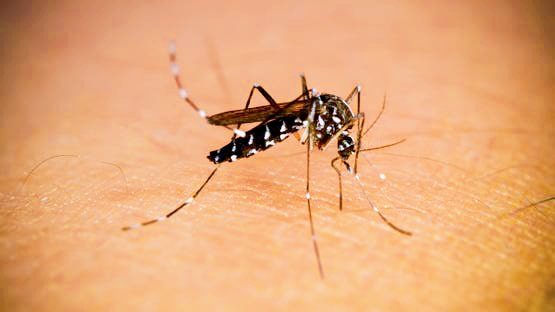After five years since the end of the COVID-19 pandemic, the "COVID atmosphere" is once again looming over southern China, but this time due to the outbreak of a mosquito-borne virus known as "Chikungunya", in one of the largest waves of its spread since its discovery in the country nearly twenty years ago.
In recent weeks, the city of Foshan in Guangdong province has reported more than 7,000 confirmed cases of the virus, amid reports of sporadic cases appearing in other neighboring cities and towns, according to American magazine TIME.
This sudden spread has prompted health authorities in China to mobilize their capabilities and return to using the confrontation tools they relied on during the COVID crisis.
* Strict Measures in the Style of COVID
The Chinese authorities drew inspiration from the COVID pandemic response guide, as they began implementing mass testing for the population and imposed health isolation for the infected, along with comprehensive disinfection of the affected neighborhoods.
Dozens of hospitals have also been designated to treat infected cases, and the number of isolation beds designated for the infected has increased to exceed 7,000 mosquito-resistant beds, according to the Chinese news agency "Xinhua".
In an effort to limit the spread of the virus, the authorities launched unconventional solutions, the most notable of which are:
_ Introducing larvivorous fish into lakes and swamps that may be fertile environments for mosquito breeding.
_ Releasing genetically modified mosquitoes known as "elephant mosquitoes" that do not bite humans but feed on the Aedes mosquitoes responsible for transmitting the virus.
* What is the "Chikungunya" Virus?
The "Chikungunya" virus is a viral infection transmitted by mosquitoes, specifically the Aedes aegypti and Aedes albopictus, which are the same two species that transmit the dengue and Zika viruses, according to the World Health Organization.
The symptoms of the disease usually begin 4 to 8 days after being bitten by an infected mosquito, and include:
• Fever
• General fatigue and nausea
• Severe joint pain that may last for weeks or even months, and in some cases for years.
It was named "Chikungunya" after a word in the Kimakonde language in southern Tanzania, meaning "to become contorted", which describes the condition of patients who suffer from painful deformity and mobility weakness due to the severity of the symptoms.
* Is it deadly? Who is most at risk?
According to the World Health Organization, the "Chikungunya" virus does not spread from person to person and is rarely fatal, although infants and the elderly are most at risk of experiencing severe symptoms.
There is no specific treatment for the disease yet, but it is advised to take paracetamol or acetaminophen to relieve symptoms and fever.
* History of the disease .. from Africa to Asia and America
The "Chikungunya" virus first appeared in southern Tanzania in 1952, with subsequent cases recorded in Asia and Africa, among the most notable:
• Thailand (1967).
• India (1970s and 2006) - where about 1.3 million people were infected, especially in the states of Karnataka and Maharashtra.
• Kenya (2004) - when the disease infected about 70% of the population of Lamu Island, before spreading to Mauritius and Seychelles.
• Sri Lanka (2006).
• Singapore and Thailand (late 2000s).
• There have also been outbreaks recorded in South America, with limited cases appearing in the United States (Florida, Texas, Puerto Rico, Virgin Islands) since 2014.
• In China, sporadic cases were recorded between 2010 and 2019, but the current outbreak is considered the most widespread.
* Current Global Situation
According to the European Centre for Disease Prevention and Control, about 240,000 cases of "Chikungunya" have been reported worldwide this year, including 90 deaths related to the virus, with South American countries being the most affected.
Although the "Chikungunya" virus is not classified as a deadly virus, its rapid spread raises concerns, especially in densely populated areas prone to mosquito breeding.
Prevention, through combating mosquito breeding sources and rapid medical intervention, remains the most important way to avoid a new health disaster.

